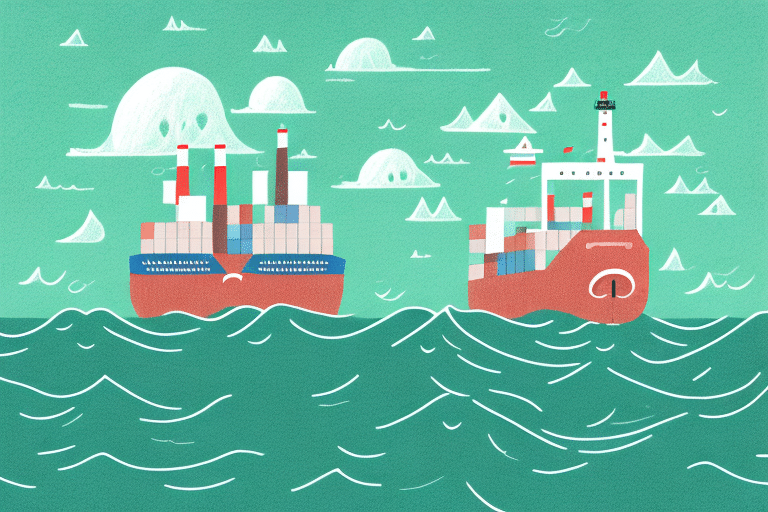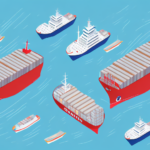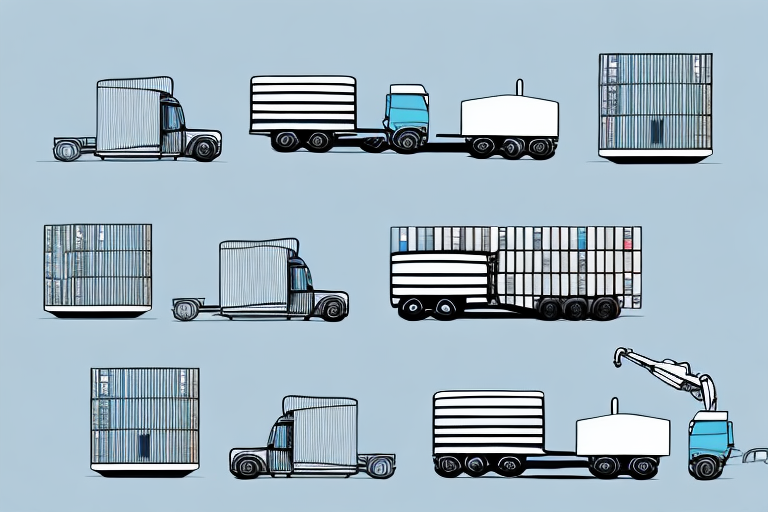Understanding the Factors That Affect Cargo Insurance Rates
When it comes to shipping goods, cargo insurance is a necessary part of the process. It protects you from financial loss in the event that your cargo is damaged, lost, or stolen during transit. However, the cost of cargo insurance isn't always straightforward. A number of factors can influence the rates you'll pay for coverage. In this article, we'll take a deep dive into the factors that affect cargo insurance rates, from the basics of what it is and why it's important, to the complex calculations and variables that go into determining the cost of coverage. Whether you're a business owner who ships goods regularly or an individual shipping a personal item, understanding these factors can help you get the best rates on your cargo insurance policy.
What is Cargo Insurance and Why is it Important?
Simply put, cargo insurance is protection against financial loss due to damage, theft, or loss of goods during transit. This type of insurance is typically purchased by businesses or individuals who are shipping goods by land, sea, or air. Without cargo insurance, the shipper would be liable for any losses or damages incurred during transit. This can result in significant financial losses, particularly if the cargo is high-value or if a large quantity of goods is lost or damaged.
It is important to note that not all cargo insurance policies are created equal. Some policies may have exclusions or limitations that could leave the shipper vulnerable to financial loss. Carefully reviewing the terms and conditions of any cargo insurance policy before purchasing it is essential. Additionally, working with a reputable insurance provider who has experience in the transportation industry and can provide guidance on the appropriate coverage for your specific needs is highly recommended.
Types of Cargo Insurance Coverage
There are several different types of cargo insurance coverage available, each designed to protect against different types of risks. Some of the most common types of cargo insurance coverage include:
- All Risk: Provides coverage for all types of loss or damage, unless specifically excluded.
- Named Peril: Provides coverage only for specific types of loss or damage, as outlined in the policy.
- Warehouse to Warehouse: Provides coverage from the time the goods leave the warehouse of origin until they arrive at the destination warehouse.
- Voyage: Provides coverage for a single trip, typically for goods being shipped by sea.
Carefully consider which type of cargo insurance coverage is best suited for your specific needs. For example, if you are shipping goods by sea, a voyage policy may be the most appropriate option. On the other hand, if you are regularly transporting goods between warehouses, a warehouse to warehouse policy may be more suitable. Reviewing the policy carefully to ensure it covers all of the risks that you may face during transportation, such as theft, damage, or loss due to natural disasters, is crucial.
Factors That Determine Cargo Insurance Rates
Several factors can impact the rates you'll pay for cargo insurance, including:
- The Value of the Goods Being Shipped: Higher value cargo results in higher insurance rates. Some policies may also have a cap on the maximum value of goods covered.
- The Type of Goods Being Shipped: Certain goods are considered higher-risk due to factors like fragility or susceptibility to theft, leading to higher insurance rates.
- The Shipping Route: Routes that are prone to piracy, extreme weather, or political instability may incur higher insurance costs.
- The Mode of Transportation: Different transportation modes (air, sea, land) have varying levels of risk, influencing insurance rates accordingly.
- Deductibles and Coverage Limits: Higher deductibles or lower coverage limits can reduce insurance rates, but increase financial risk in the event of a claim.
- The Insurer: Rates can vary significantly between insurers, making it important to compare policies from multiple providers.
Additional considerations include the packaging of the goods and the level of security measures in place during transportation. Proper packaging can reduce the risk of damage, potentially lowering insurance costs, while enhanced security measures can mitigate the risk of theft.
The Role of Packaging in Insurance Rates
Proper packaging not only protects goods during transit but can also influence insurance premiums. Insurers may offer lower rates for goods that are securely packaged, reducing the likelihood of damage claims.
Security Measures and Their Impact
Implementing security measures such as GPS tracking, tamper-evident seals, and secure storage can lower insurance rates by decreasing the risk of theft and loss.
The Role of Cargo Value in Determining Insurance Rates
The value of the goods being shipped is one of the most significant factors in determining cargo insurance rates. High-value cargo represents a greater financial risk for insurers, resulting in higher premiums. Additionally, some insurance policies may impose a cap on the maximum value of goods covered, affecting both rates and coverage options.
For instance, according to the Insurance Journal, the global cargo insurance market was valued at over USD 27 billion in 2022, reflecting the significant scale and importance of this sector.
The Impact of Shipping Routes on Cargo Insurance Rates
The chosen shipping route plays a crucial role in determining cargo insurance rates. Routes that are considered higher-risk due to factors such as piracy, political instability, or adverse weather conditions typically incur higher insurance costs.
For example, shipping through the Gulf of Aden is considered riskier due to piracy, leading to higher insurance premiums compared to more secure routes. Additionally, some insurers may exclude certain high-risk routes entirely, requiring alternative arrangements or additional coverage.
How the Type of Goods Affects Cargo Insurance Rates
The nature of the goods being shipped significantly impacts cargo insurance rates. High-risk goods, such as electronics, pharmaceuticals, or perishable items, may attract higher premiums due to their susceptibility to damage or theft.
Specialized goods often require tailored insurance policies. For example, perishable goods may need temperature-controlled shipping environments, and pharmaceuticals may require strict adherence to regulatory standards, both of which can influence insurance costs.
Understanding the Relationship Between Cargo Risk and Insurance Rates
Cargo risk is a composite measure that assesses the potential for loss or damage during transit. Factors like the mode of transportation, shipping route, and type of goods all contribute to the overall risk profile. Insurers use this assessment to determine the corresponding insurance rates.
Higher-risk cargo, which has a greater likelihood of experiencing loss or damage, will result in higher insurance premiums to compensate for the increased financial exposure.
The Importance of Accurate Documentation in Determining Insurance Rates
Accurate and comprehensive documentation is vital when determining cargo insurance rates. Detailed information about the goods, shipping route, mode of transportation, and other relevant details allows insurers to accurately assess risk and provide appropriate coverage.
Incomplete or inaccurate documentation can lead to coverage gaps or higher premiums, as insurers may perceive a higher risk due to uncertainties in the shipment details.
How to Get the Best Rates for Your Cargo Insurance Policy
Securing the best rates for your cargo insurance policy involves several strategic steps:
- Shop Around: Obtain quotes from multiple insurers to compare rates and coverage options.
- Reduce Risk: Minimize risks associated with the shipment by selecting trusted carriers and secure shipping routes.
- Adjust Deductibles and Coverage Limits: Balance your coverage needs with your budget by tweaking deductibles and coverage limits.
- Choose the Right Coverage: Ensure that the chosen policy adequately covers the specific type of goods and associated risks.
Common Mistakes to Avoid When Purchasing Cargo Insurance
Avoiding common pitfalls can help ensure that you obtain the most effective coverage at a reasonable price:
- Inaccurate Information: Providing incorrect details about the goods or shipment can lead to inadequate coverage.
- Inadequate Coverage: Selecting policies that do not account for all potential risks can leave you vulnerable.
- Not Comparing Providers: Failing to compare different insurers can result in missing out on better rates or coverage.
- Relying Solely on Carrier Insurance: Assuming that the carrier's insurance covers all losses can be risky, as carrier policies may have limitations.
Tips for Reducing Your Cargo Insurance Premiums
Implementing the following strategies can help lower your cargo insurance premiums:
- Select Lower-Risk Routes and Transportation Modes: Choosing safer routes and less risky modes of transportation can reduce insurance costs.
- Enhance Security Measures: Using secure packaging, tracking systems, and trusted carriers can mitigate risks.
- Optimize Deductibles and Coverage Limits: Finding the right balance between deductible amounts and coverage limits can lower premiums.
- Bundle Insurance Policies: Combining cargo insurance with other business insurance policies may qualify you for discounts.
Comparing Different Cargo Insurance Providers and Policies
When shopping for cargo insurance, it's crucial to compare rates and policies from multiple insurers to find the best coverage at the most affordable rates. Consider the following when comparing providers:
- Reputation: Choose insurers with strong reputations and positive customer reviews.
- Financial Stability: Ensure the insurer has the financial backing to cover potential claims.
- Coverage Options: Assess the range of coverage options and any exclusions or limitations.
- Customer Service: Look for providers that offer excellent customer support and efficient claims processing.
Resources such as the Insurance Information Institute provide valuable insights into different insurance providers and policy options.
The Future of Cargo Insurance: Trends and Predictions
As the shipping industry continues to evolve, so too does the world of cargo insurance. With the rise of e-commerce and changing consumer expectations, insurers are adapting to new challenges and opportunities. Some key trends and predictions for the future of cargo insurance include:
- Advanced Data and Analytics: The use of big data and analytics is becoming increasingly important in determining rates and customizing coverage options.
- Emerging Technologies: Technologies such as blockchain and IoT devices are improving risk assessment and claims processing.
- Focus on Sustainability: There is a growing emphasis on sustainability and environmental responsibility, influencing insurance policies and rates.
- Specialized Coverage Options: Insurers are developing specialized policies for high-risk industries, including pharmaceuticals and electronics.
Staying informed about these trends can help businesses and individuals make strategic decisions regarding their cargo insurance needs.
Conclusion
Understanding the factors that affect cargo insurance rates is essential for anyone involved in shipping goods by land, sea, or air. By taking the time to research and compare policies, and by understanding the risks and variables involved in determining rates, you can secure the coverage you need at the most affordable rates. Leveraging reputable sources and staying updated on industry trends will further enhance your ability to make informed decisions about your cargo insurance needs.






















